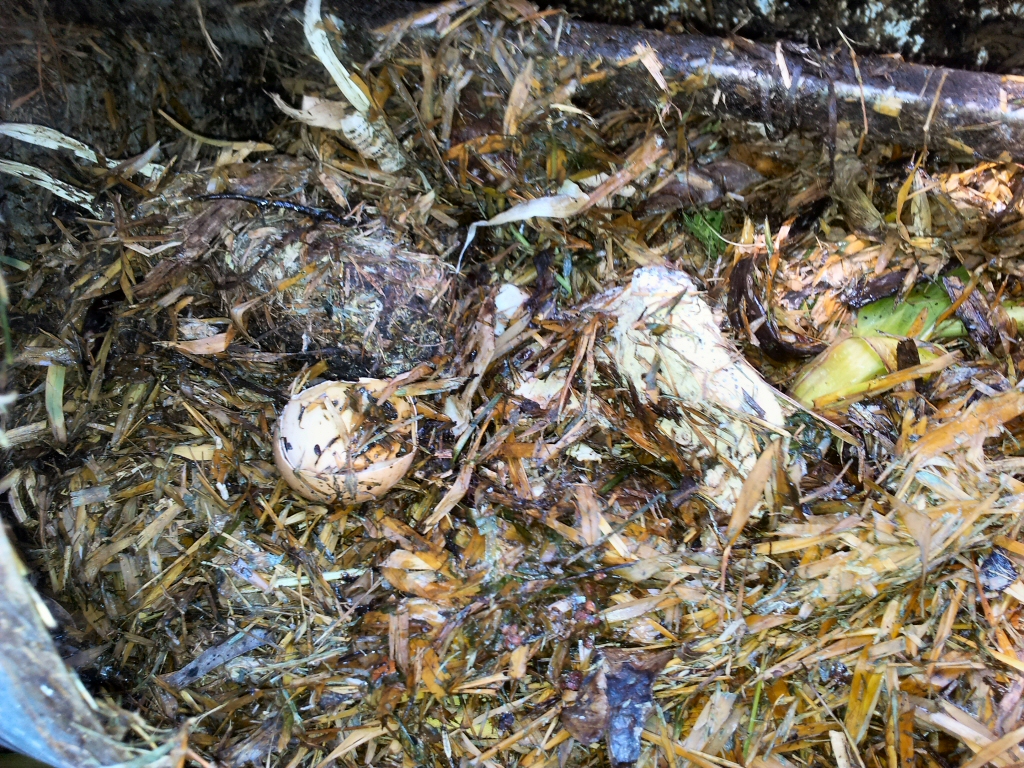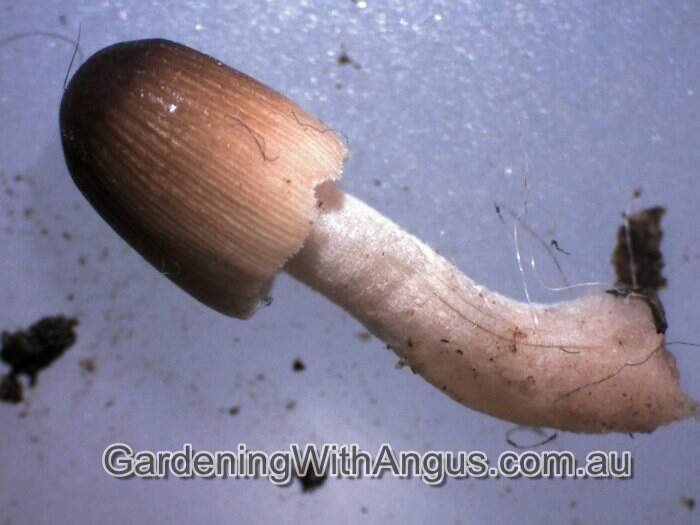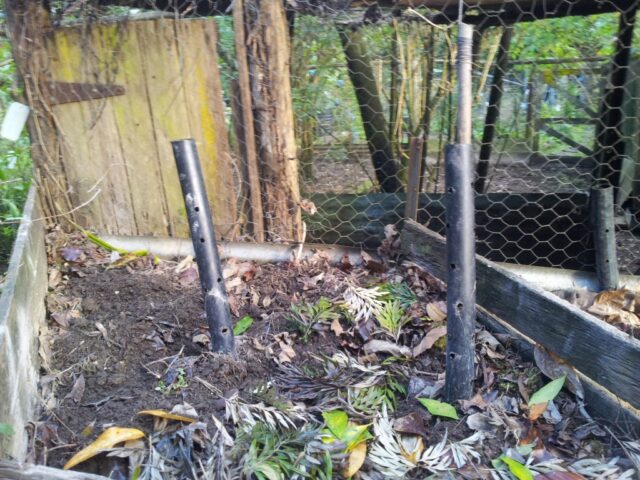A compost heap is a microbiological festival of organisms that are vital to breaking down various organic materials. The most prolific are fungi, bacteria and actinomycetes and these are the most important groups of the many species that can be found in a compost heap. All have a role to play in the decomposition process but some are far more desirable than others.
Fungi are probably the most important group and are often evident in the heap through the ‘threads’ of vegetative growth (hyphae) that group together to form the mycelium that feeds on organic matter. Spore bodies (sporangia) are often seen as well in the form of sometimes colourful fruiting bodies that release cloud of microscopic spores that enable the fungus to propagate itself. A note of caution that these spores can cause asthma attacks and other respiratory problems so it is best to wear a dust mask when you are working with your compost heap.
Other microbes such as bacteria and actinomycetes are invisible to the naked eye but are also extremely important in various stages of the composting process. Most of these micoorganisms are present at low levels in normal garden soils so you can easily encourage them by adding a few shovelfuls of either soil or compost to your new compost heaps as you build them.
Composting is a process that can be done in a number of different ways. If we understand a bit about the basic microbiology of composting we can choose a method of composting that will best suit our backyard situation. When organic materials are kept in a pile with a suitable supply of mineral nutrients and adequate oxygen the result is rapid microbial growth. Initially there is an abundant supply of readily available sugars from the carbohydrates, and amino acids from the proteins in the organic matter and this feeds a variety of micro-organisms (mainly fungi and bacteria) known as mesophiles (ie organisms that grow best in a moderate temperature range around about 20-25 degrees C).
Mesophilic organisms in composting
If the volume of the heap is large enough (say 1 cubic metre) and there are sufficient nutrients and oxygen the mesophiles generate heat by their metabolism to the point where they suppress their own growth as the temperature in the heap rises dramatically (it can reach can reach a maximum of 70-800C). As the temperature rises the mesophilic microbes give way to a different group of microorganisms known as thermophiles that thrive at high temperatures. Fungi and bacteria such as the aptly named Thermomyces lanuginosus, Bacillus stearothermophilus respectively proliferate and these organisms are mainly responsible for the rapid breakdown of the tough plant cell-wall materials such as cellulose. This phase often leads to a huge reduction in volume of the heap (often halved) as the structural materials break down.
Thermophilic organisms in composting
The high temperature phase is often referred to as thermophilic composting for obvious reasons. If you are trying to compost organics that contain a lot of woody material and/or weeds then it is essential to create the conditions mentioned above that will allow these thermophilic organisms to thrive. If all parts of the compost heap are heated to over 600C there is an excellent chance of killing virtually all plant pathogens and weeds (although it must be said that species with seed with very hard coats such as wattles may still survive but are easily weeded out). The other advantage of thermophilic composting is the faster break down that occurs with the compost maturing within weeks.
After a few weeks the temperature drops and then various beneficial mesophilic microbes such as Bacillus, Enterobacter, Flavobacterium and fungi such as Trichoderma, Gliocladium as well as Penicillium take over and displace the thermophiles.
Whilst thermophilic or “hot composting has many benefits many gardeners simply do not have the volume of organic material to reach the ‘critical mass’ necessary to generate sufficiently high temperatures to kill weeds and plant pathogens. ‘Cold’ compost heaps (where small amounts of material are continually added to the top of the heap as they become available) provide a workable solution. Mesophilic organisms will eventually break the material down but it will take months instead of weeks. It is also critical that the heap does not have disease-infested material or perennial weeds added.
Denitrification in composting
In addition to the various beneficial organisms that can proliferate in the heap there are also some unwelcome visitors, in particular the so-called anaerobic organisms (ie those that thrive in the absence of oxygen). Of particular concern is a group of bacteria responsible for a process known as denitrification. The common denitrifying bacteria include several species of Pseudomonas, Alkaligenes and Bacillus. These organisms will take hold if the heap is too wet or if the centre of the heap runs out of oxygen which can happen in a heap of a cubic metre or more that is not turned every week or two. As nitrates are released from the organic matter the denitrifying bacteria use them as a source of energy and during the process turn them into gases such as nitrous oxide thus creating a nasty “rotten egg gas” smell to the heap. This is the smell of invaluable nutrients being lost to your compost!
So the key question for organic gardeners and composters is “How do we find the balance that gives us the maximum amount of beneficial organisms and keeps out the bad guys”. Firstly decide whether your circumstances are best suited to either ‘hot’ or ‘cold’ composting as outlined above. Secondly, arm yourself with the hardware to do the job. This can mean constructing or purchasing a frame for cold composting that allows material to be added at the top and removed from the bottom at the same time or something for ‘hot’ composting such as a compost tumbler. Thirdly ensure that whatever system you use you are adding the right sort of material and keeping an adequate supply of moisture and oxygen up to it.




